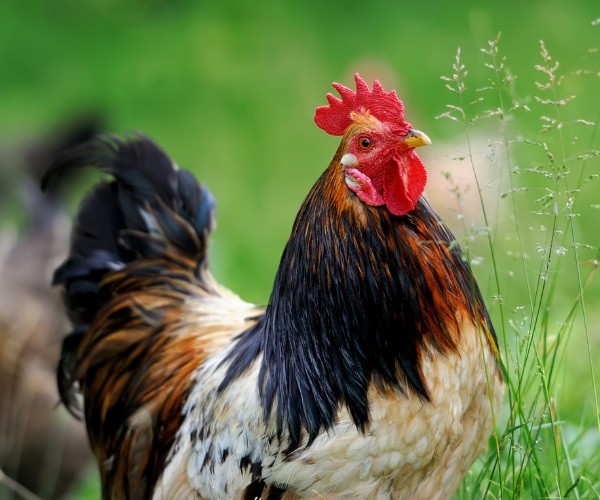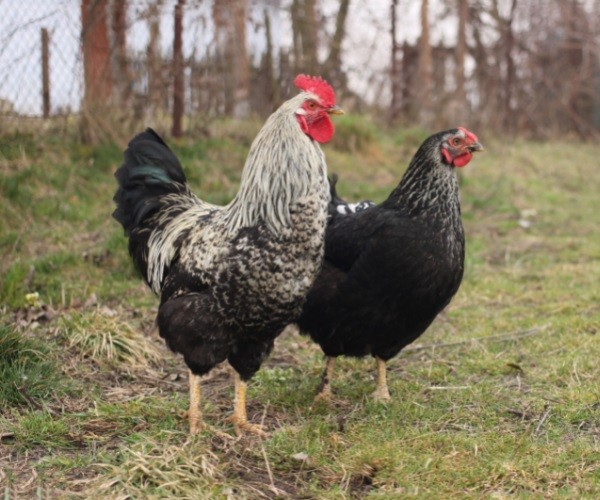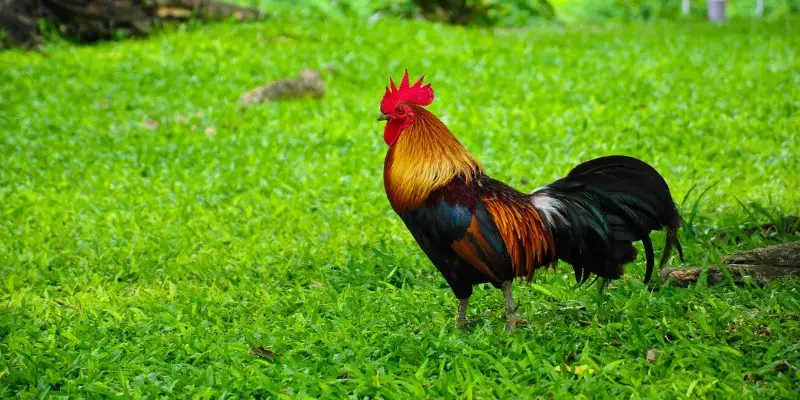Are all male chickens roosters? The short answer is not really. All roosters are male chickens, but not all male chickens are roosters. How do you ask? Find out in this article.
What are Roosters?
Roosters are mature male chickens that are at least a year old. They can carry out their reproductive functions of fertilizing eggs to form chicks. When male chickens are less than a year old, they are referred to as cocks or cockerels.
Are All Roosters Male?

Yes, all roosters are male. They have the male reproductive organ and carry out specific functions in the coop. However, because roosters are generally loud, most people don’t have too many roosters in their coop. A ratio of 1:10 is maintained in favor of hens.
How Can You Tell If a Chicken Is a Rooster?
Well now that you know what a rooster is, we expect that the next question would be how to identify them. For the most part, identifying roosters is easy once they have attained sexual maturity. Thus, we advise that you allow them to reach at least a year before determining if the chicken is a rooster.
Roosters also have markers that give them away. An example of such a difference is the size and color of their comb.
What is the Difference between a Cockerel and a Rooster?

Both the rooster and the cockerel are male chickens. The only difference between them is their age. A male chicken under the age of one year is referred to as a cockerel because it is not fully mature. However, male chickens that are fully mature and are at least a year old are referred to as roosters.
What is the Difference between a Rooster and a Capon?
A rooster is a male chicken with all its reproductive organs intact and capable of fertilizing eggs. The capon, on the other hand, is a castrated male chicken. Thus, while a rooster can fertilize eggs, the capon cannot.
The castration of the male chicken is most common in farms where chickens are bred for meat. Capons are bigger than your average chicken and reputed to be more flavorful than roosters or hens. After their castration, they are placed on a rich diet of porridge or milk.
What is the Difference between Roosters and Hens?

Let’s start with the obvious gender difference. Roosters are male chickens, while hens are female chickens. Now that we have gotten that out of the way let’s explore the other physical and behavioral differences that distinguish roosters from hens.
Eggs Production

Remember when we said hens were females, yup, hens lay eggs. Roosters on the other hand do not. Quite an obvious difference isn’t it? You’d be surprised at how many people feel roosters can also lay eggs.
Hens can lay eggs without the roosters’ help. The only part where the rooster is needed in egg production is for fertilization.
Appearance
Roosters and hens have different looks that depend on their breed. One major difference in their appearance is the shape and color of their feathers. Roosters have more elegant and colorful feathers that help them attract hens.
On the other hand, hens have more subdued feather colors. Since their feathers are not as tough as those of the roosters, they can easily get damaged during mating.
Combs and Wattles
If you are not conversant with chicken terminologies, the comb is the red dangly portion on top of the chickens’ head. Roosters have redder and more prominent combs than hens. The only exception to this is the capon (castrated male chickens).
On the other hand, Wattles refers to the reddish structure underneath the chickens’ chin. The roosters’ wattle develops at a younger age than the female chicken. They are also redder and larger.
Noise
Another difference between roosters and hens is the noise they make. Roosters make more noise than hens; they crow loudly at the crack of dawn to signify that it is morning. However, you can only tell whether your chicken is a rooster or hen by the sound they make.
On rare occasions, hens too can crow. This is especially true if the hen is dominant in the coop.
Legs and Posture
Another way to tell chickens apart is to look closely at their legs and posture. Roosters have much thicker legs filled with spurs than hens. There is also the matter of posture; roosters strut with their heads raised high and their chest puffed up to display their dominance.
Conclusion
We hope this article has cleared up any confusion you had around roosters and male chickens. All roosters are male chickens but not all male chickens are roosters. Also, there are other terminologies used to describe male chickens. They include capon, cockerel, and cocks.
Last Updated on November 1, 2023 by Pauline G. Carter

